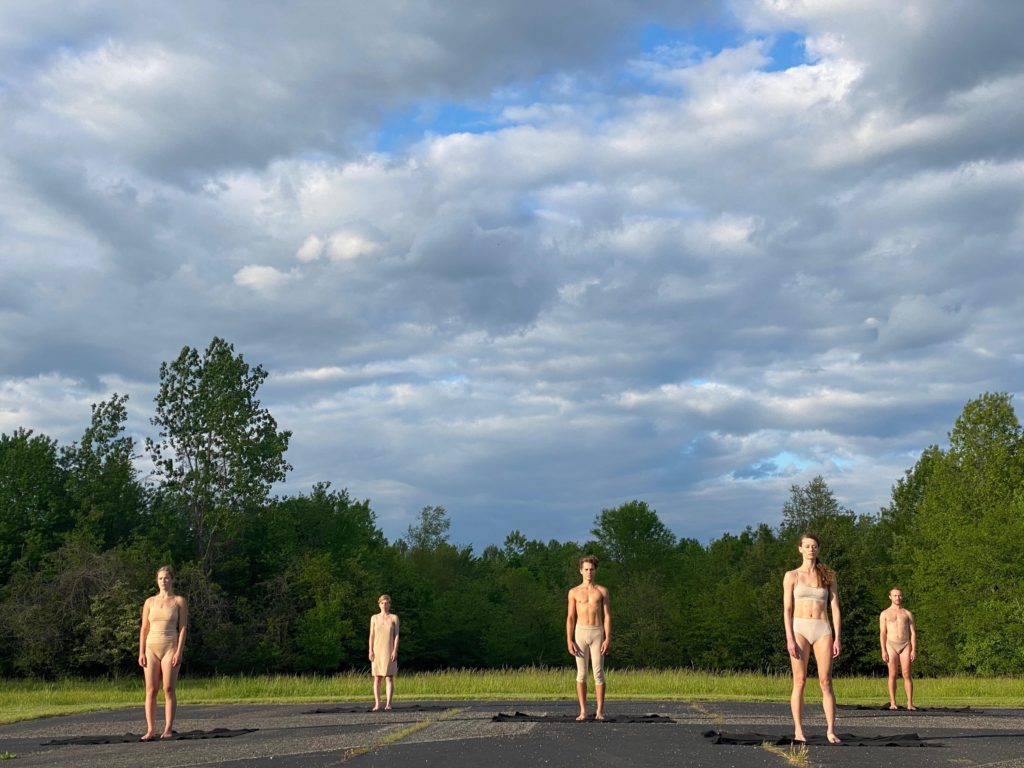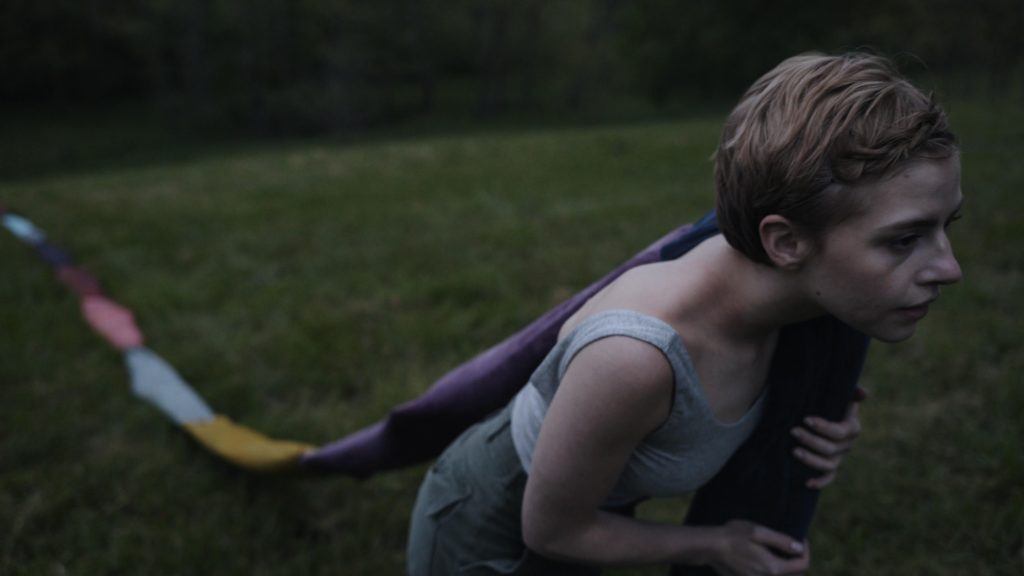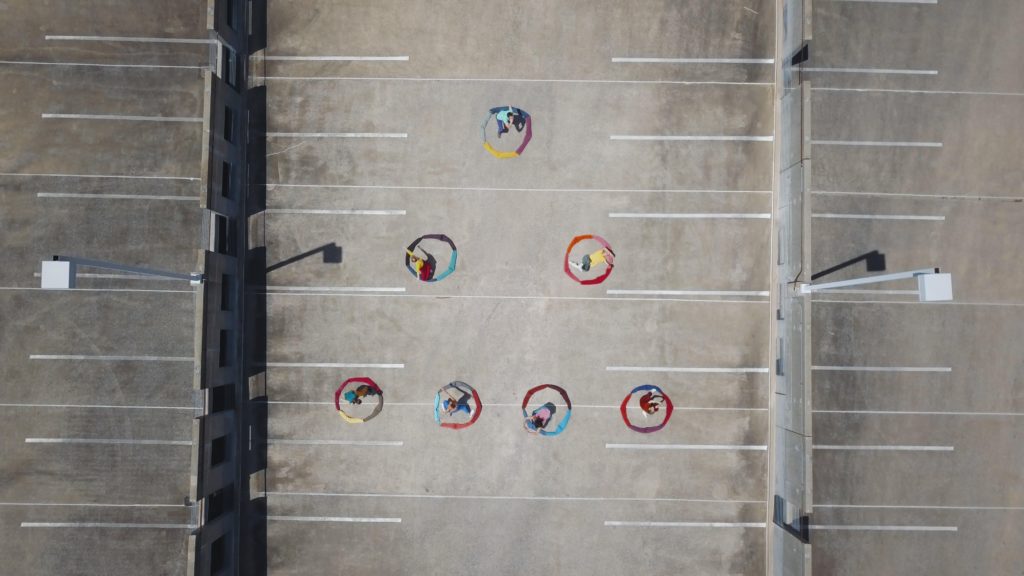At the OZ Arts Website:
Burdens from a Distance
Carrying burdens: a universally accepted part of life and timely theme as the world shares a collective burden. Over the course of three years, speaking to hundreds of people from all walks of life, Jana Harper discovered the same underlying concerns we all share: “our loved ones, our futures, our planet, and of course, our health.” This Holding was created from the exploration of these burdens, portraying this portion of the human experience in a raw, beautiful, and thought-provoking way. During a period when many feel more alone than ever in their lives, Harper holds a fitting sentiment about her work: “If This Holding could leave you with one feeling, I hope it is the knowledge that you are not alone.”

This Holding: Traces of Contact, rather than being performed live, was presented as an online film event by OZ Arts Nashville in response to the widespread healthy and safety concerns due to the COVID-19 pandemic. Originally conceived for the stage, once rehearsals were stymied by prohibited in-person gatherings and the assembly of a large audience was out of the question, the entire creative team quickly pivoted in order to re-imagine the work for film. In a live Q & A session following the performance, members of the team commented about the transition of the creative process and how the changed conditions impacted their interpretations and performances of the work as a final product. Despite the circumstances, the production team was thrilled with the outcome, recognizing the performance as a unique product of its time, and voicing appreciation for the ability to utilize uncommon settings and the beauty of nature as part of the narrative.
Divided into seven acts, the film event honed in on individuals, duos, or divided groups of dancers, seemingly socially distanced. Soloists and distanced group dancers interacted with artistic objects, representative of various burdens one might carry, while duos interacted only with one another, portraying various relationship complexities and the burdens that attend.
…the dancer contemplated it, dragged it, entwined herself in it, and attempted to walk while bound by her affliction.
Each solo act honed in on a single dancer, interacting with objects in a tangible representation of human hardship. The first, Emma Morrison, appeared in a verdant

landscape as she related to and struggled with an incredibly long, seemingly endless, artistically rendered “burden.” Sewn from many lengths of different colored fabric and evidently filled with something heavy, the prop resembled a Burmese python as the dancer contemplated it, dragged it, entwined herself in it, and attempted to walk while bound by her affliction. The second soloist (David Flores) appeared in front of a warehouse at night, attempting to pick up and carry a myriad of colored sandbags, lifting one after the other in order to take with him. The ceaseless struggle of picking up bag after bag, bearing their weight, attempting to carry them elsewhere, then only to have one fall, then another, and then another, was difficult to watch and felt painfully authentic.
All three duets seemed to cast light on different types of human relationships, each in its own unique stage, with unspoken intricacies between the two people. The first duo appeared passionate and lustful, yet timid and reserved at times. Close-up person to person contact, combined with the natural landscape and stunning cinematography, created a sense of intensely personal sensuality and exclusivity. The second duo portrayed a more weathered relationship, undoubtedly with history and baggage, but with maturity and contemplation. Rather than looking for the world in one another, the two were stretched out on the forest floor in repose, facing outward in the same direction, pondering the concerns of life together. The final duo characterized a more platonic friendship, filled with love and devotion, yet not without disappointment and hurt. Unexpected combinations of movements channeled quickly changing emotions, ranging from jagged confusion and resentment to flowing warmth and adoration.
The two ensemble numbers, despite appearing in disparate landscapes, functioned similarly in spacing, with each dancer relegated to six feet away from any of the others. The first group number involved each dancer wearing a large sheet of black fabric, wrapped about their body and limiting their range of motion. Over the course of the act, the film brilliantly captured the unlikely landscape combination of greenery and black tarmac, the overarching feeling of unrest and discomfort, and each dancer’s individual relationship with their black burden.
The final act featured the largest number of dancers of any movement, positioned six feet from one another, each enclosed by a snake-like, multi-colored art prop, arranged in a circle around their area. With each dancer wearing a unique, brightly colored outfit, the group of movers stood out against a stark, rooftop pavement scene, devoid of

nature or greenery. As the camera panned and re-focused on smaller groups or independent dancers, each dancer seemed to choose from a library of movements suited to or chosen for their character. One flowed endlessly from one new movement to the next, while another performed a sequence on repeat. Some moved with extroverted emotion, attempting to interact with the world around them, while others looked inward, ignoring outside factors and expressing restrained, introspective affliction. Upon observing the dancers individually as well as in combination, a spectator cannot help but begin to identify on a personal level, watching each character battle their own demons, surrounded by the blunt landscape of concrete structure, yet the vibrant color of human existence.
Jana Harper’s vision for this work came to life with the assistance of movement and assistant director Rebecca Steinberg, composer and musician Moksha Sommer, and filmmaker Sam Boyette. Steinberg’s originality and adaptability to a film setting brought an intimate, confidential feel to the movement of the work, highlighting the strengths of each dancer and utilizing existing relationships to re-imagine multi-person numbers during a time of separation. Sommer’s original score brought warmth and interest to trying subject matter, highlighting sounds of nature in and amongst electronically programmed and live instrumental music. Boyette’s videography beautifully captured the energy, emotion, and depth of each dance number, combining all seven movements to create a captivating work of art.
The collaboration that took place in order to create and carry out This Holding: Traces of Contact is a moving reminder of how unified and connected we have the power to be, whether together or apart physically. Recognizing the burdens that unify us is just another means of learning how to move forward together. Perhaps Harper got her wish—after watching this performance, one can feel only gratitude and hope, knowing there is strength and power in shared experiences with others, trials and tribulations included.



